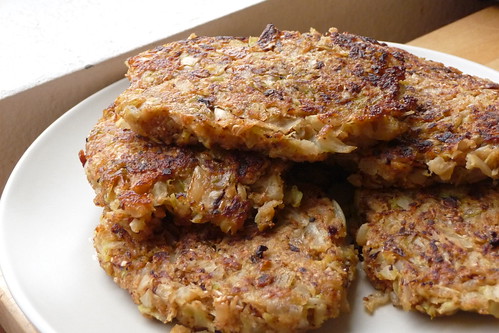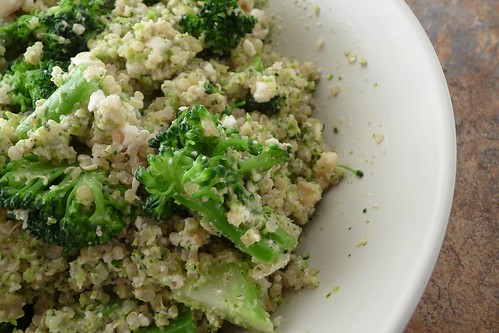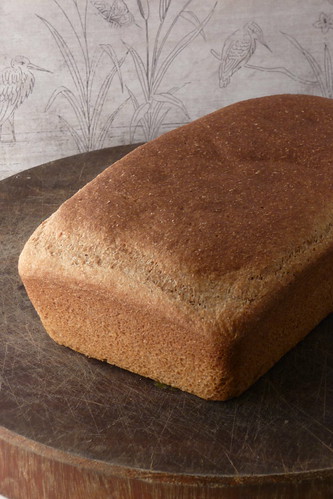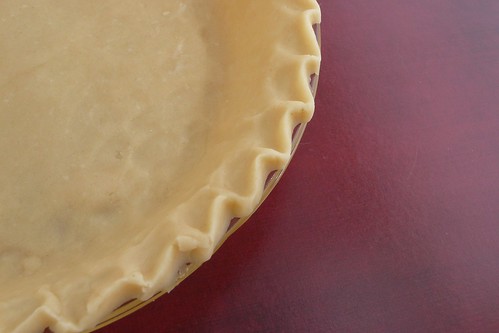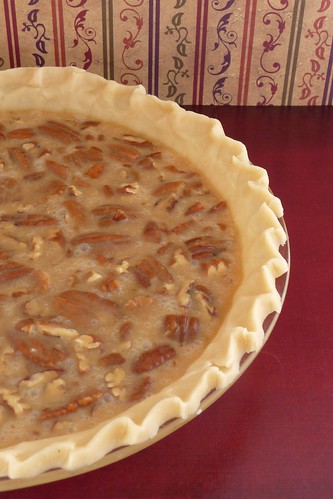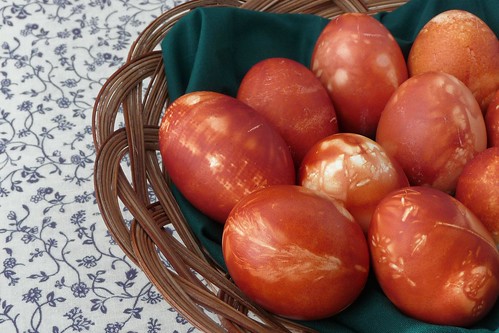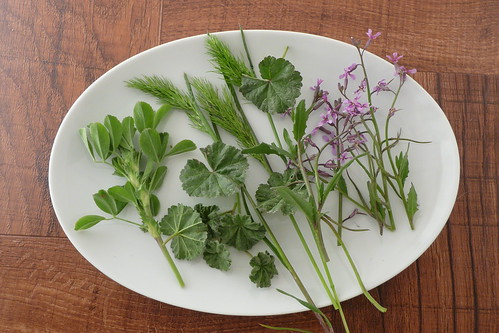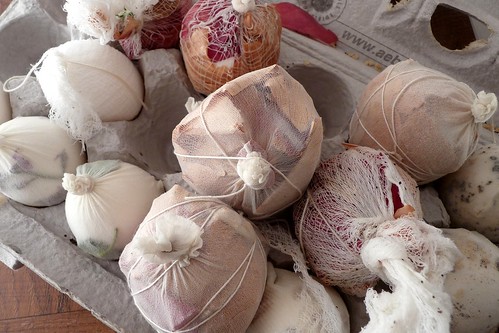Graham Bread
Those of you who follow me on Twitter probably saw my comments about a bread I baked that came out beautifully. Today, I'll share the recipe. :)
The recipe is from an excellent book on breadmaking by James Beard that I found at the local thrift store for $2. (I love thrifting!) As I also mentioned on Twitter, I'm very tempted to work my way through it because so far, everything either my husband and I have tried has come out beautifully.
I don't have pictures because I forgot to take them before I sliced up the second (and more photogenic) loaf... but then again, pictures don't do it justice. It looks like a wheat bread like many others -- you can't smell the heavenly wheaty scent that rises from a freshly toasted slice nor taste it with some orange blossom honey drizzled over.
Poor you.
So you'll just have to make this then so you get the full experience. No worries, I'll wait right here.
Graham Bread [printable recipe]
Adapted for 2 loaves from Beard On Bread
- 3 1/2 tsp instant yeast1
- 2 tbsp sugar2
- 12 oz warm water (between 100° and 115° F)
- 8 oz evaporated milk
- 1 1/2 oz butter, melted
- 1 1/2 tbsp salt
- 2 cups graham flour3
- 3 - 4 cups all-purpose flour
In a large mixing bowl, combine graham flour, salt, sugar and yeast. Pour the water, milk and butter on top. Beat well and add in all-purpose flour a cup at a time until it comes together into a firm dough.
Turn the dough out onto a floured board and knead for 10 minutes until it is smooth and elastic. Or, use a stand mixer fitted with a dough hook to do the kneading - it will take slightly less time and much less effort.
Form the dough into a ball and place into a lightly oiled bowl. Cover lightly with a clean towel and let it rise in a warm place until doubled (about 1 hour or two). Punch down the dough and cut in half.
Grease two 9x5x3" loaf pans4 well. Shape the dough pieces into loaves and arrange in the tins. Cover them back up with the towel and let them rise again until doubled (another hour or so). Slash the tops.
Bake in a preheated oven at 425° F for 10 minutes then reduce the heat to 350° F. Bake for 30 - 35 minutes. (The loaves will sound hollow when done or you can check their temperature - they should be at 190°F.) Let cool in the pans for 5 minutes, then turn out onto racks to cool completely. Slice and serve.
Notes:
- Instant yeast does not need to be proofed. It's wonderful stuff. If you use active dry, you will need to proof it in the warm water with the sugar for 5 minutes before continuing with the recipe. Also, use 4 tsp of active dry.
- Or honey, which is what I wished I had done and will do differently next time.
- Whole wheat can be substituted for graham, which is coarser because the different parts of the wheat are ground separately then remixed. You can make it yourself, according to Wikipedia by mixing all purpose flour with wheat bran and wheat germ. For this recipe, you would need to mix 170 g all-purpose (about 1 1/3 cups) with 30 g wheat bran (about 1/2 cup) and 5 g (3 tsp) wheat germ. Graham flour is very coarsely textured.
- This dough is firm enough, according to Beard, that you can just make free-form loaves if you don't have or don't feel like using loaf pans.

